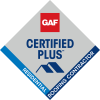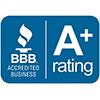Solar roofing is gaining more popularity over the past decade since temperatures are getting harder to maintain and electric costs have been on the rise. People now look for the most efficient and effective solar roofing application. Most commonly we see solar panels installed along a fabricated grid which is attached to the roof. Alternatively, we have seen an increase in the use of solar shingles.
Solar panels generally are only installed on newer roofs. I’ve replaced roofs with fifteen plus years of life simply because the client wanted to install solar panels and the company wouldn’t install them because the roof was over ten years old. On the other hand, I have seen plenty of leaks pop up after several years of the panels being installed. When wind blows between the roof and the panel, this will naturally create lift. When the panels abruptly lift with the wind, the fasteners immediately absorb the energy from the wind. This creates an air gap which can allow water to seep into the roof deck. In turn, water stains appear on the ceilings. Asphalt shingles are also susceptible to wind damage but today we are focusing on solar panels.
Rapidly advancing is another option for a more energy efficient home. This is the rise of solar shingles. These shingles mimic the look of asphalt shingles with a slightly longer lifespan of up to fifty years. Similar to some of the higher quality architectural shingles. These shingles are installed almost identically to our former asphalt shingle but instead of short strips, this material unrolls in long strips. Less seams and better protection.
Hail is always a worry with roofing. Same as wind and ice dams, these can all be damaging to our day to day life when they cause damage to the one place we can generally relax. Solar is a wonderful option for energy efficiency but we have quite a way to go before the cost and efficiency meet on the charts. No matter what solar application you choose always make sure a certified crew is installing the equipment or roofing system.





